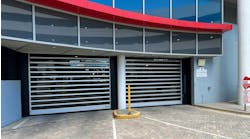Leverage Mobile Tools for Emergency Preparedness and Response
Living with the effects of a public health pandemic over the past year has tested organizations and individuals across the board. But whenever these challenges eventually recede, they will no doubt be replaced by others.
Now is an excellent opportunity to leverage lessons from the present pandemic and re-examine the role of mobile work management in your organization’s emergency preparedness and response plans.
Mobile work management should be a pillar of your emergency preparedness and continuity of operations strategy. Here’s why.
[Related: Why Mass Notification Systems Improve Communication with Remote Workers]
Mobile Work Management and Continuity of Operations
A major dimension of pandemic preparedness includes plans for maintaining continuity of operations, anticipating how to continue performing critical functions during a range of potential vulnerability scenarios, including:
- How to keep critical operations functioning with reduced staff
- How to deal with shortages of materials or disruption in food or fuel supplies
- What to do when face-to-face communication becomes limited or restricted
- How to rapidly redeploy resources to changing conditions or trigger load shedding progressions
- How to communicate emergency protocols or specialized procedures
- How to ensure that critical protocols are being followed and documented
Although the particulars of these plans will vary from industry to industry—since the specific constraints and opportunities are likely be quite different—the underlying challenge remains the same: how best to continue to operate under short or extended periods when conditions are radically different from a steady state.
[Related: Simplify Access Control with Smartphones]
Learning from Experience
Two of the most frequently reported assessments from after-action reviews done after a major emergency include “a lot of stuff happened that we didn’t expect” and “it would have gone better if we could have been nimbler with the needed adjustments.” This is life; planning and responding are different things and they rarely line up perfectly. But, having the best tools with which to plan, execute and adjust is always to your advantage.
The keys to creating this valuable leverage are access to data in real-time, with information entered only once, and always available to all who need it. The same capabilities that dramatically increase the effectiveness of every field employee and supervisor also provide real-time information for management and subject matter experts to make critical decisions during both routine and emergency operations.
How Mobile Tools Enable Emergency Response
Here are some real-world examples of how organizations are using mobile work management tools to plan and respond to emergency conditions—as well support steady state operations—without the need to ever meet, print, or physically transport information or instructions.
- Link emergency plans directly to mobile devices, ensuring technicians and supervisors know (and have) the plan.
- Create emergency drills that can be initiated, monitored, and documented from mobile devices using scripted scenarios and user feedback, fully integrated in real time.
- Fully integrate workforce management, including time off requests (sick, family leave, vacation, personal, etc.) with real time routing for supervisory/management approval and notification, assuring critical operations are fully staffed.
- Provide real-time crew roster management views with answers to critical questions: Who is already here? Who is coming in? Who else is available?
- Provide real-time mapping of emergency work orders, critical conditions, route changes or weather events, allowing assignment of work by proximity.
- Conduct virtual toolbox safety talks that can be initiated and verified by any crew supervisor.
- Upload photo and video of critical conditions or emergency updates that can be instantly edited, marked up and shared.
- Enable barcoding for assets, inventory, locations and work orders for use with mobile-device cameras or external Bluetooth scanners for increased flexibility.
- Create and submit paperless timecards to avoid the need to return to congested work areas.
- Document operator rounds that can be instantly created, modified and verified in real time.
- Digitally record inspection results, avoiding the handling of shared logbooks or workstations, integrated with real-time notification logic.
- Automate push notifications based on criteria that can be created and modified in minutes.
- Fully integrate paperless materials ordering, eliminating paper requisitions and purchase orders, and allowing for real-time review and approval by authorized field supervisors and/or purchase managers.
- Fully integrate materials vendor management, including requests, pricing, commitment and delivery confirmation, with all information moving directly between your staff and your vendors, paperless and in real time.
- Fully integrate service vendor management, including vendor request confirmation, the expected technician and arrival time, and real-time awareness of technician’s arrival, with all work status updates going directly to your EAM with no separate records or data entry.
Using mobile applications, organizations can leverage their Enterprise Asset Management (EAM) system to dramatically reduce time, cost and confusion by making critical information always available to those who need it. More importantly, as recent events have shown, the same mobility tools that optimize your steady state become even more valuable during emergency conditions. Using the lessons of today can help make sure your teams have the right tools to meet whatever challenges lay ahead.
About the Author:
Jeffery Smith is the senior director, business process solutions, for InterPro Solutions.
Read next: How This Software Targets Energy Savings



